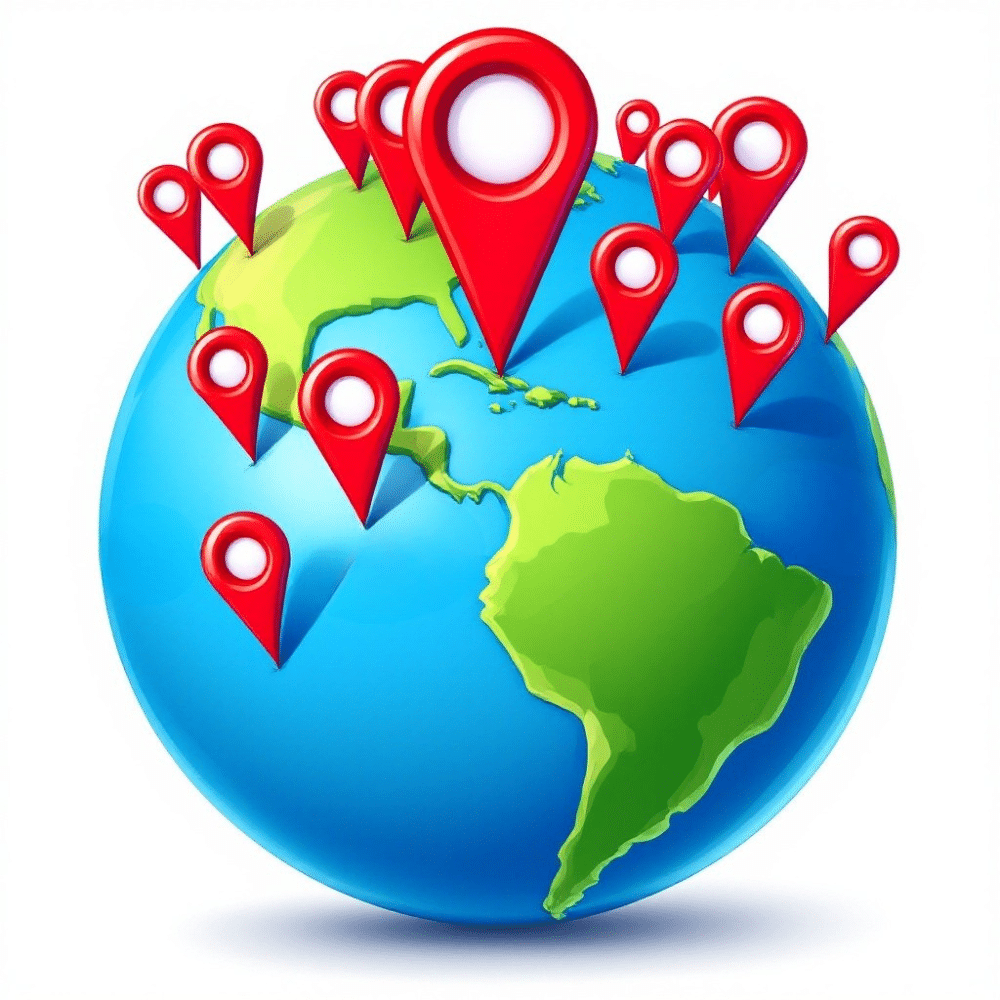Building Location-Specific Landing Pages for Local SEO
Key Takeaways
- Location-specific landing pages are critical for businesses with multiple locations.
- Unique, locally relevant content helps you rank higher in local search results.
- Including NAP details, schema markup, and local keywords improves visibility.
- High-quality visuals and customer reviews boost engagement and trust.
- Internal linking strengthens your site’s structure and SEO.
Let’s talk about something that’s often overlooked but incredibly powerful: location-specific landing pages.
If your business operates in multiple locations, you can’t just slap the same content on every page and hope for the best. Customers in one city aren’t searching for the same things as customers in another. And search engines? They notice.
Here’s the thing: location-specific landing pages are like personalized invitations. They speak directly to your audience, in their language, about their needs. And when done right, they can dramatically boost your local SEO, drive traffic, and convert casual browsers into loyal customers.
So, how do you build these pages? Well, it’s not rocket science, but it does take a bit of strategy. Let’s dive into 7 powerful tips that will help you create location-specific landing pages that actually work.
1. Create Unique Content for Each Location
I get it—creating unique content for every location sounds exhausting. But it’s non-negotiable.
Search engines don’t like duplicate content, and neither do your customers. If every page says, “We’re a great bakery,” but doesn’t mention anything about their neighborhood or their needs, why should they care?
Here’s what you can do:
- Write about the specific services you offer in that area.
- Mention local landmarks, events, or even weather quirks.
- Use testimonials from customers in that location.
Example:
If you’re a coffee shop in Toronto, talk about your proximity to the CN Tower or how you’re the perfect stop for visitors during the Toronto Film Festival. These small details make your page feel relevant and personal.
2. Optimize for Local Keywords
This one’s a big deal. Local keywords are the bread and butter of location-specific landing pages.
Think about how people search. They’re not just typing “plumber.” They’re typing, “emergency plumber in downtown Chicago” or “best plumber near me.” Those long-tail keywords? That’s your sweet spot.
Tips for Success:
- Use keyword tools like Google Keyword Planner or AnswerThePublic to find local phrases.
- Sprinkle them naturally throughout your content. Don’t overdo it—nobody likes keyword stuffing.
- Optimize your headings, meta descriptions, and even image alt text.
3. Include NAP Details and Schema Markup
NAP stands for Name, Address, and Phone Number. Simple, right? But here’s the catch: it has to be consistent everywhere—your website, Google My Business, Yelp, and any other directory.
Why does this matter? Because search engines use this information to verify your business. If your NAP details are inconsistent, it’s like sending mixed signals.
Bonus Tip: Add schema markup. It’s a fancy way of structuring your data so search engines can read it better. Think of it as giving Google a cheat sheet about your business.
Location-specific landing pages are the secret weapon for businesses looking to dominate local search results and connect with their community.
4. Add High-Quality Visuals and Localized Media
People don’t just read—they look. A page without visuals feels lifeless.
Add photos of your storefront, your team, or even the surrounding area. If you can, include a video. Maybe a quick tour of your location or a behind-the-scenes look at your services.
Example:
A gym in Vancouver could post photos of its trainers, workout spaces, and even the nearby park where they host outdoor classes. It’s not just about showing what you offer—it’s about creating a connection.
5. Leverage Customer Reviews and Testimonials
Let’s be honest. We all trust reviews. A glowing testimonial can do more for your credibility than a paragraph of self-promotion.
If you have reviews specific to a location, showcase them. It’s proof that people in that area love what you do.
Pro Tip: Use review schema markup to make your reviews stand out in search results.
6. Ensure Mobile-Friendliness
Here’s a stat for you: most local searches happen on mobile devices. If your site isn’t mobile-friendly, you’re losing customers—plain and simple.
Make sure your pages load quickly, look good on small screens, and are easy to navigate. Test them on different devices. Don’t assume—check.
7. Use Internal Linking to Boost SEO
Internal linking is like giving your visitors a map. It helps them navigate your site while also telling search engines how your pages are connected.
Link your location pages to your main site and vice versa. Create a “Locations” page that lists all your branches with links to their individual pages.
Example:
A retail chain with stores across Canada could have a “Find a Store” page with links like, “Visit our Toronto location” or “Check out our Vancouver store.”
We Build Cool

Success Stories
365 Data Centers
Discover how we rapidly rebuilt and optimized a 30-page website for 365 Data Centers, restoring their online presence and managing digital ad campaigns across key regions to drive engagement and growth.
XTECH Football Pads
Discover how we transformed XTECH Football Pads‘ digital presence, boosting their online sales and tripling website traffic through innovative website development and user experience enhancements.
BeEarth Foundation
Discover how we partnered with the BeEarth Foundation to develop a website that aligns with their mission of sustainability and global engagement. Our work has significantly increased their online visibility and engagement, supporting their efforts to promote sustainable development.
We Recycle Solar
Learn how we illuminated digital success for We Recycle Solar by completely redesigning their website to reflect their leadership in the growing solar recycling industry and implementing strategic digital advertising campaigns that enhanced their visibility at key industry events.
Preferred Home Health Care & Nursing Services
Explore how we elevated the digital presence of Preferred Home Health Care & Nursing Services by enhancing their website for better lead generation, building a dedicated site for staff recognition, and optimizing SEO for their location pages.
What Our Clients Say: Elevating Online Success
Final Thoughts
Building location-specific landing pages isn’t just a box to check—it’s a strategy to grow your business.
By creating unique content, optimizing for local keywords, and making your pages visually engaging, you’re not just improving your SEO. You’re building trust with your customers. And trust? That’s what turns clicks into conversions.
But remember, this isn’t a one-and-done deal. Keep your pages updated. Add new reviews, tweak your content, and stay on top of local trends.
Want to take your local SEO to the next level? Check out our game-changing local SEO strategies for small businesses for more actionable tips.
FAQs
Answer: Location-specific landing pages are web pages tailored to individual business locations. They include unique content, NAP details, and local keywords to attract local customers.
Answer: They help businesses rank higher in local search results, drive targeted traffic, and connect with local audiences.
Answer: Use unique content, local keywords, high-quality visuals, and customer reviews. Don’t forget to include schema markup and ensure mobile-friendliness.
Answer: Absolutely! We specialize in creating SEO-optimized landing pages tailored to your business locations.
Let's Build Something Sublyme
Need help creating location-specific landing pages? Contact Sublyme Digital today for a free consultation. Let’s build pages that drive traffic and deliver results.



